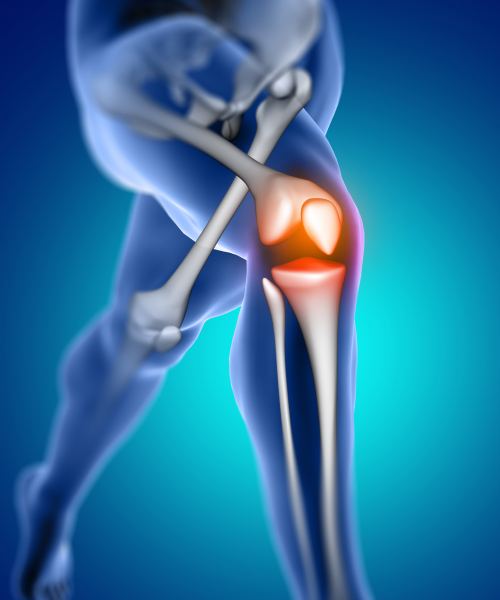The knee is a hinge joint. The knee joint comprises bony structures as well as a complex anatomy of muscles, ligaments, tendons, and cartilages.
The bony structures that are involved in the formation of the knee joint are:

The knee is a hinge joint. The knee joint comprises bony structures as well as a complex anatomy of muscles, ligaments, tendons, and cartilages.
The bony structures that are involved in the formation of the knee joint are:
The various bony components of the knee joint are held together by muscles, tendons, ligaments and cartilages.
The commonest sports injuries involve these soft tissue structures and, to a lesser extent, the bony components.
The knee is one of the most common sites for sports injuries, especially in sports which involve running and contact/impact. This is partly due to the fact that almost all contact sports involve heavy loading on the knee joint while requiring a sudden “twist”/ “turn” or “impact” while running and bearing the body’s weight.
Common sports injuries involving the knee joint:
One of the prevalent knee injuries encountered is a sprain or tear in the anterior cruciate ligament (ACL). Athletes engaged in high-demand sports, such as football, basketball, and soccer, face a heightened risk of ACL injuries. Although partial tears of the ACL are uncommon, most incidents result in complete or nearly complete tears. In the event of an ACL injury, restoration of full knee functionality may necessitate surgery, contingent upon various factors, including the extent of the injury and the individual's activity level.
The posterior cruciate ligament (PCL), situated just behind the anterior cruciate ligament (ACL) within the knee, is susceptible to injury from considerable force. Commonly, injuries to the PCL occur when a bent knee forcefully impacts a car dashboard during an accident or when a football player falls on a bent knee. Additionally, severe twisting or direct contact during sports can lead to PCL damage. A majority of posterior cruciate ligament injuries are partial tears, and some have the potential to heal naturally. Individuals with isolated PCL injuries may often resume sports activities without encountering stability issues in the knee.
The knee joint encompasses two crucial types of cartilage, each playing a vital role in safeguarding the joint's bones. Damage to knee cartilage can manifest painful symptoms stemming either from acute sports-related injuries or chronic overuse. The extent of cartilage injury dictates suitable treatment options and the duration of recovery. In cases of knee cartilage injuries, the resultant pain and knee locking can impede daily activities like walking and running. While pain is a prominent symptom of knee cartilage damage, recurrent knee swelling is also a common indicator. Identifying cartilage damage as the cause of knee pain can be challenging, given its various potential sources. Additional symptoms associated with knee cartilage injuries encompass:
An osteochondral fracture is a localised injury affecting a joint's surface, resulting in a breakage of a segment of cartilage and the underlying bone, with or without separation. While this type of injury can manifest in any joint, it is most frequently observed in the knee, particularly affecting the kneecap. Osteochondral fractures are more prevalent in adolescent males, posing a significant challenge for treatment due to the limited self-healing capacity of cartilage. Common signs and symptoms include:
